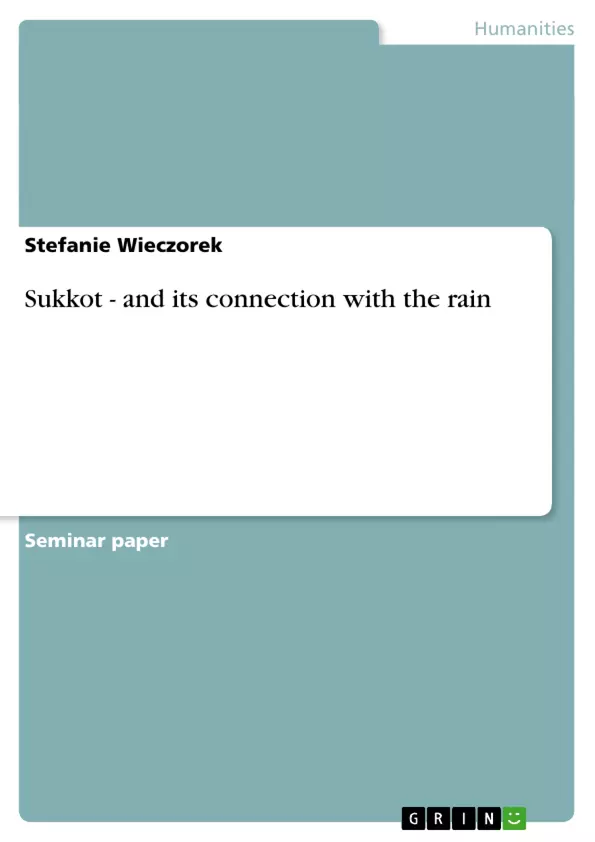The Jewish Calendar of the Festive Days hews to the moon, therefor are there no fixed dates
in the year. The Jewish Festive Year is characterised as on the Nature Year bounded and
historically determined. Traditional events from the history of the people were dedicated to
certain feasts. Thereby bring they the historical action of God to his people in mind. Every
year hopes the people on new actions from God now and in the future.
The Jewish Calendar is divided in 12 months: Tišri, Hešram, Kislew, Tebet, Šebat and Adar
are part of the autumn, and Nisan, Tyyar, Sinan, Tammuz, Ab and Ellul are part of the spring.
The Jewish Year began originally in autumn, the natural orbits of the moon form the basis of
the year. The twelve months begin each with the appear of the crescent. Later the beginning of
a year was installed of the first day of the new moon after the equinox in spring.
All feasts begin with sunset, on the eve of the actual day.
Sukkot is one of these feasts, it takes place in the month Tišri and in the following excerpt
will be told of it and its connection with the rain.
Inhaltsverzeichnis (Table of Contents)
- Introduction
- Sukkot
- Conclusion
Zielsetzung und Themenschwerpunkte (Objectives and Key Themes)
This text aims to explore the Jewish holiday of Sukkot and its connection to the concept of rain. It delves into the history, rituals, and symbolism of Sukkot, analyzing its significance within the Jewish calendar and tradition.
- The historical and religious significance of Sukkot
- The connection between Sukkot and the concept of rain
- The symbolism of the Sukkah and the four species
- The role of Sukkot in the Jewish calendar and tradition
- The practical aspects of celebrating Sukkot
Zusammenfassung der Kapitel (Chapter Summaries)
The introduction to this text discusses the Jewish calendar and its significance. It highlights the importance of the feasts and their historical context, relating them to the actions of God and the hopes of the Jewish people. The introduction also provides a brief overview of the Jewish calendar and its divisions.
The chapter on Sukkot delves into the details of this feast, including its historical significance, rituals, and symbolism. It explores the connection between Sukkot and the concept of rain, examining the symbolism of the Sukkah, the four species, and their role in the celebration.
Schlüsselwörter (Keywords)
The main keywords and focus topics of this text are the Jewish holiday of Sukkot, rain, the Sukkah, the four species, the Jewish calendar, and the historical significance of Jewish feasts. It explores the symbolic and practical aspects of celebrating Sukkot, highlighting its connection to Jewish tradition, history, and the concept of rain.
- Citar trabajo
- Stefanie Wieczorek (Autor), 2009, Sukkot - and its connection with the rain, Múnich, GRIN Verlag, https://www.grin.com/document/195068



